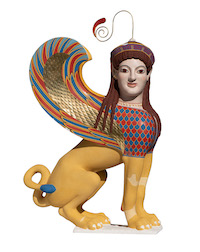
NEW YORK – Ancient Greek and Roman sculpture was once colorful, vibrantly painted, and richly adorned with detailed ornamentation. On view at the Metropolitan Museum of Art through March 26, Chroma: Ancient Sculpture in Color reveals the colorful backstory of polychromy — meaning “many colors” in Greek — and presents new discoveries of surviving ancient color on artworks in the Met’s world-class collection. Exploring the artistic practices and materials used in ancient polychromy, the exhibition highlights cutting-edge scientific methods used to identify ancient color and examines how color helped convey meaning in antiquity, and how ancient polychromy has been viewed and understood in later periods.


